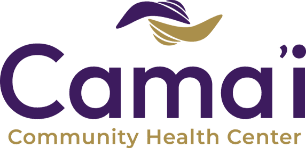Maintaining a nutritious diet in rural Alaska presents unique challenges due to limited access to fresh produce, high food costs, and reliance on store-bought food with long shelf lives. However, with thoughtful planning and resourcefulness, individuals and families can make healthier food choices to support long-term well-being.
In this short guide, we’ll provide practical tips for balanced nutrition in rural Alaska, emphasizing the importance of local and seasonal foods, traditional diets, and creative meal planning.
Struggling to maintain a healthy diet in rural Alaska? Schedule an appointment with Cama’i Community Health Center for personalized nutrition guidance.
Understanding Food Security in Rural Alaska
Food security—the ability to access sufficient, safe, and nutritious food—is a major concern in many rural Alaskan communities. Harsh weather, high transportation costs, and geographic isolation make it difficult to obtain fresh fruits, vegetables, and other perishable items. As a result, many households rely on packaged and processed foods, which often lack essential nutrients.
Alaska Native communities are particularly affected by food insecurity, as they face limited food access to traditional foods and subsistence resources. According to the Indian Health Service, Native communities often face food insecurity due to factors like poverty, rural isolation, limited transportation, food deserts, and disruptions to traditional food systems, which contribute to higher rates of chronic conditions. Addressing these issues requires a comprehensive approach, including increasing local food production, supporting community programs, and making informed dietary choices.
Accessing Local and Seasonal Foods
One of the best ways to maintain a balanced diet in rural Alaska is by prioritizing local and seasonal foods. Community-supported agriculture (CSA) programs and farmers’ markets are excellent sources of fresh, locally grown produce. Although these options may be limited in some areas, food cooperatives and buying clubs can help residents access a variety of nutritious foods.
However, there are significant disparities in access to local foods between urban and rural areas. Indigenous populations often face more challenges in urban settings where preferences for traditional foods are declining. Sharing knowledge and resources is crucial to improving access in both types of areas.
Additionally, growing a personal or community garden can provide fresh vegetables during the warmer months. Crops like potatoes, carrots, and kale can thrive in Alaska’s short growing season. Preserving these foods through freezing, drying, or canning can extend their availability throughout the year.
Incorporating Traditional Foods into a Healthy Diet
Traditional foods play a vital role in Alaska Native communities, providing essential nutrients while preserving cultural heritage. Many traditional foods are high in protein and omega-3 fatty acids, which are beneficial for heart and brain health. Examples include:
- Fish (salmon, halibut, herring)
- Game meat (moose, caribou, seal)
- Berries (blueberries, cranberries, salmonberries)
- Edible plants (fireweed, fiddlehead ferns, beach greens)
Incorporating these subsistence foods into meals can enhance nutrition while reducing reliance on processed store-bought items. However, access to traditional foods is increasingly threatened by climate change and environmental changes. Community-led efforts to preserve these food sources are crucial for maintaining a healthy diet.
Overcoming Challenges of Limited Fresh Produce
When fresh produce is scarce, it’s important to maximize nutrition with available resources. Here are some strategies:
- Opt for Frozen and Canned Options – Frozen fruits and vegetables retain most of their nutrients and can be a great alternative when fresh options aren’t available. Canned produce can also be nutritious, but it’s best to choose low-sodium and no-added-sugar varieties.
- Use Dried Foods – Dried fruits, vegetables, and legumes are excellent pantry staples that provide essential vitamins and minerals.
- Plan Balanced Meals – Creating meals that incorporate a variety of food groups ensures adequate nutrient intake. For example, pairing canned salmon with whole grains and frozen vegetables can provide a well-rounded meal.
- Preserve Seasonal Produce – Freezing, drying, or fermenting local foods can extend their shelf life and maintain nutritional value.
Community-Based Initiatives
Community-based initiatives are critical for improving food security in Alaska, particularly in rural communities. These initiatives can take many forms, including community gardens, food cooperatives, and nutrition education programs. Community gardens, for example, can provide access to fresh, locally grown produce, while also promoting social connections and community engagement.
Food cooperatives, on the other hand, can provide affordable access to healthy food, while also supporting local food producers. Nutrition education programs can help individuals and families develop healthy eating habits and improve their overall well-being. Additionally, community-based initiatives can help promote food sovereignty and self-determination, particularly in Alaska Native communities.
Food Assistance Programs
Food assistance programs are essential for addressing food insecurity in Alaska, particularly in rural communities. These programs can take many forms, including food banks, food pantries, and meal delivery programs. Food banks and food pantries can provide emergency food assistance to individuals and families in need, while meal delivery programs can provide nutritious meals to vulnerable populations, such as seniors and young children.
In Alaska, food assistance programs can be particularly challenging to implement, due to the state’s vast size and remote locations. However, innovative solutions, such as mobile food banks and online ordering systems, can help improve access to food assistance programs. Additionally, food assistance programs can be designed to promote local food production and support Alaska Native communities.
Growing and Harvesting Your Own Food
Growing and harvesting your own food can be a powerful way to improve food security in Alaska, particularly in rural communities. This approach can provide access to fresh, locally grown produce, while also promoting self-sufficiency and food sovereignty. In Alaska, individuals and families can grow their own food through gardening, hunting, and fishing.
Gardening can be a particularly effective way to grow your own food in Alaska, particularly in areas with limited access to grocery stores. Individuals and families can grow a variety of crops, including vegetables, fruits, and herbs, using techniques such as container gardening and hydroponics. Hunting and fishing can also provide access to fresh, locally harvested meat and seafood, while also promoting cultural and traditional practices.
Overall, growing and harvesting your own food can be a powerful way to improve food security in Alaska, particularly in rural communities. This approach can promote self-sufficiency, food sovereignty, and cultural preservation, while also providing access to fresh, locally grown produce.
Nutrition Education and Awareness
Raising awareness about healthy eating is crucial for improving nutrition in rural Alaska. Community programs, schools, and healthcare providers can play a key role in promoting balanced diets through:
- Cooking and nutrition workshops – Teaching residents how to prepare healthy meals with available ingredients.
- School meal programs – Ensuring children receive nutritious meals at school.
- Public health campaigns – Educating communities about the benefits of healthy eating and reducing processed food consumption.
By equipping individuals with the knowledge and skills to make healthier choices, these efforts can lead to long-term improvements in public health.
Practical Tips for Balanced Nutrition in Rural Alaska
Maintaining a nutritious diet is possible with strategic planning and smart food choices. Here are some actionable tips:

- Stock up on nutrient-dense foods – Choose whole grains, lean proteins, healthy fats, and fiber-rich foods.
- Prepare meals in advance – Cooking in bulk and freezing portions can save time and ensure healthy options are always available.
- Limit processed foods – Reduce consumption of high-sugar, high-sodium, and heavily processed items.
- Stay hydrated – Drinking enough water is essential for overall health, especially in extreme climates.
- Use traditional foods when possible – Incorporate local and culturally significant foods for both nutrition and heritage preservation.
Taking Steps Toward Healthier Eating
Healthy eating in rural Alaska requires creativity, resourcefulness, and community support. By prioritizing local and seasonal foods, incorporating traditional diets, and taking advantage of available resources, individuals can improve their nutrition despite the challenges of remote living.
If you’re looking for personalized guidance on healthy eating and nutrition in rural Alaska, schedule an appointment with Cama’i Community Health Center today. Our team is here to support you in making sustainable, health-conscious food choices for a better quality of life.


